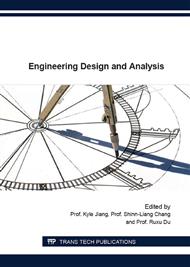p.40
p.45
p.50
p.55
p.61
p.66
p.71
p.77
p.82
Stability and Computer Simulation of Trailed Implement under Different Operating Conditions
Abstract:
The mechanics of a trailer system moving up and down sloping ground under different operating conditions was theoretically simulated. A computer program was developed to analyze the system to predict the effect of both the trailer loading weight and the slope angle on the off-road vehicle stability, traction ability, and drawbar loading. The results of this analysis showed that the off-road vehicle becomes unstable when towing a 3750 kg trailer uphill at 28° slope angle. Insufficient traction occurred at slope angles ranging from 15° to 18° corresponding to trailer weight of 3750 to 750 kg. The parallel component of drawbar pull reached a maximum value of (17318) N when the trailer was pushing the off-road vehicle downhill at 30° slope angle. The normal component (normal to the tractive surface) showed similar maximum values for both uphill and downhill motions of the system. The use of computer analysis in this study provided a significant improvement in predicting the effect of different parameters on stability and control of off-road vehicle-trailer combination on sloping ground.Keywords: Stability, Traction, Sloping ground, Drawbar.
Info:
Periodical:
Pages:
61-65
Citation:
Online since:
February 2016
Authors:
Keywords:
Price:
Сopyright:
© 2016 Trans Tech Publications Ltd. All Rights Reserved
Share:
Citation:


